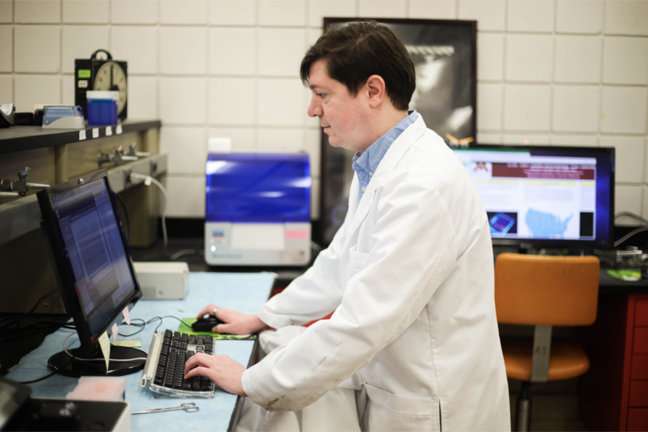Genes might play unrecognized role in aging, intervention

While aging is familiar to all of us, exactly how it occurs on a molecular basis has been an area of intense study and interest. We take it for granted that different species age at different rates, yet we do not have a good understanding of why and how. Most mammals have similar numbers of genes, many of which show conserved function, yet there are several orders of magnitude differences in lifespan across mammals. For instance, mice and small animals live shorter lifespans, yet other animals such as bats, naked mole rats, whales, elephants and primates age significantly slower.
What is different in the genomes of these species that allows them to live so long? It is only with the advent of full genomes for hundreds of species that we can begin to compare lifespans between species with differences in their genomes.
Research led by University of Minnesota College of Food, Agricultural and Natural Resource Sciences Assistant Professor Christopher Faulk reveals that regions that control gene expression have evolved to contain more epigenetic switches in about 5 percent of our genes. These switches control the amount of protein made by these genes, rather than the type of protein, and may be able to prevent these protein levels from changing in animals that have longer lifespans.
His study, "The Evolution of CpG Density and Lifespan in Conserved Primate and mammalian Promoters," published in the April issue of Aging, found that 5 percent of our genes have a previously undiscovered link to lifespan. By comparing the epigenetic control regions, called promoters, in 25,000 genes in more than 100 animal genomes, his team detected a signal identifying these genes as under evolutionary selection for long lifespan.
Most gene promoters are enriched in CpG dinucleotides, a letter C next to a letter G in the DNA code, as measured by the density of CpG sites in a region. The trait of CpG density in promoters does not change the gene sequence itself, but controls how much of the gene product is made. However, the number of CpG sites in a specific gene promoter region can differ between species.
"In the majority of the genes we identified, we found a positive correlation between increasing CpG enrichment and lifespan," Faulk said. "We believe these genes evolved to allow greater control over protein production as an animal ages."
The study used data from the National Center for Biotechnology Information and the Eukaryotic Promoter Database to download more than 100 mammalian genomes and identify corresponding promoter regions that are shared between humans and these mammals.
"This research is only possible now that hundreds of genomes are in the public domain," Faulk explained. "This represents tens of billions of dollars in research funding for hundreds of separate groups working on their own goals. We were able to leverage this freely available data in a new way to answer a question about the evolution of the epigenome. And even more, this research uses the differences in species acquired over millions of years to tell us something about how aging and lifespan have evolved. Almost everyone will get old and die and that is generally considered to be a bad health outcome."
A more comprehensive comparison of data needs to happen next. "This project really provides the first analysis using massive comparative genomics to give understanding to a physiological trait like aging. We were unsure of whether anything would be found, and surprised at the strength of the signal. The next steps will involve more comprehensive comparison of other genomic regions, generating a better comparative database, and comparing other life history traits to genomic features. We must confirm the function of these regions in a lab model," Faulk said.
More information: Adam T. McLain et al. The evolution of CpG density and lifespan in conserved primate and mammalian promoters, Aging (2018). DOI: 10.18632/aging.101413
Provided by University of Minnesota



















